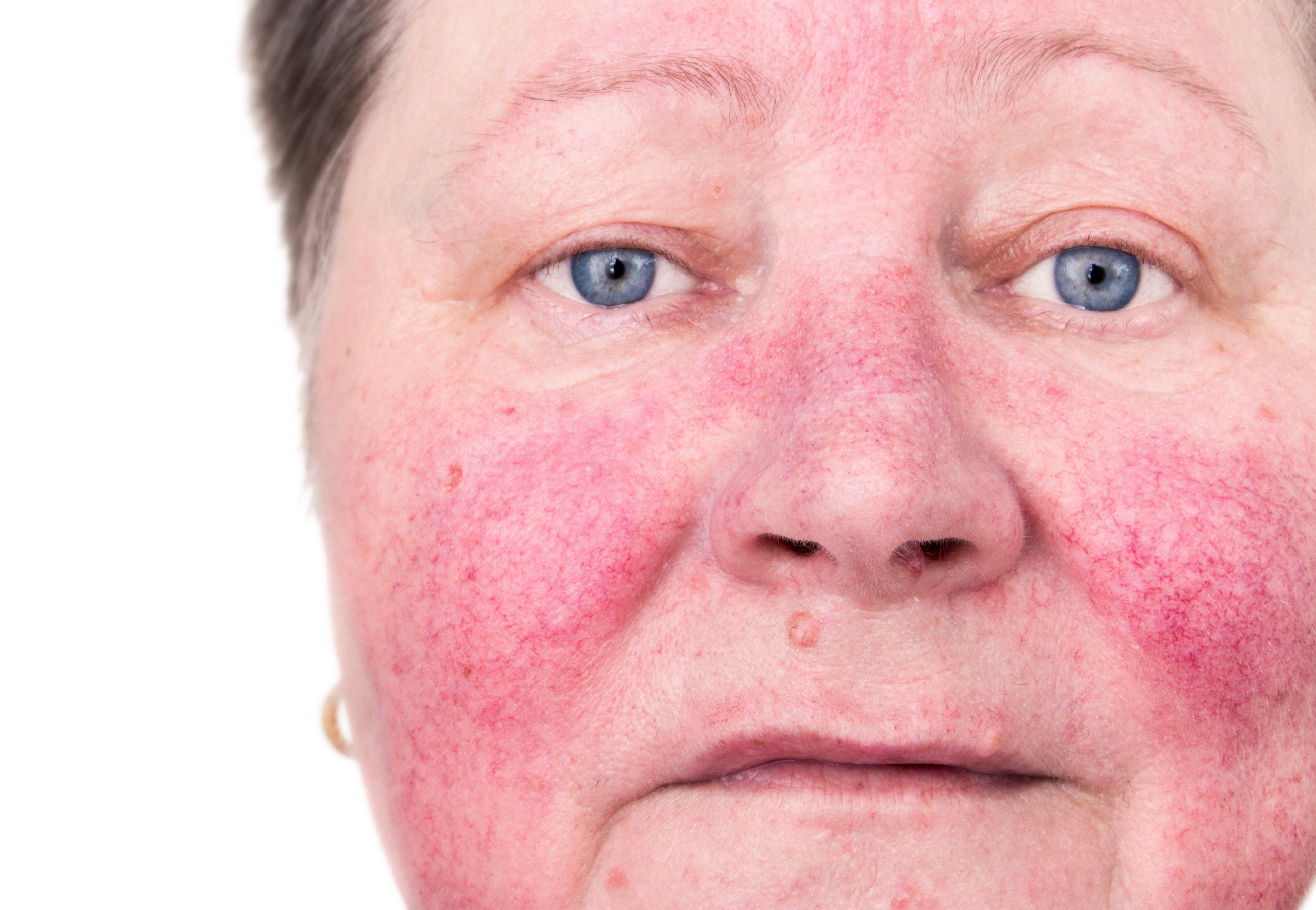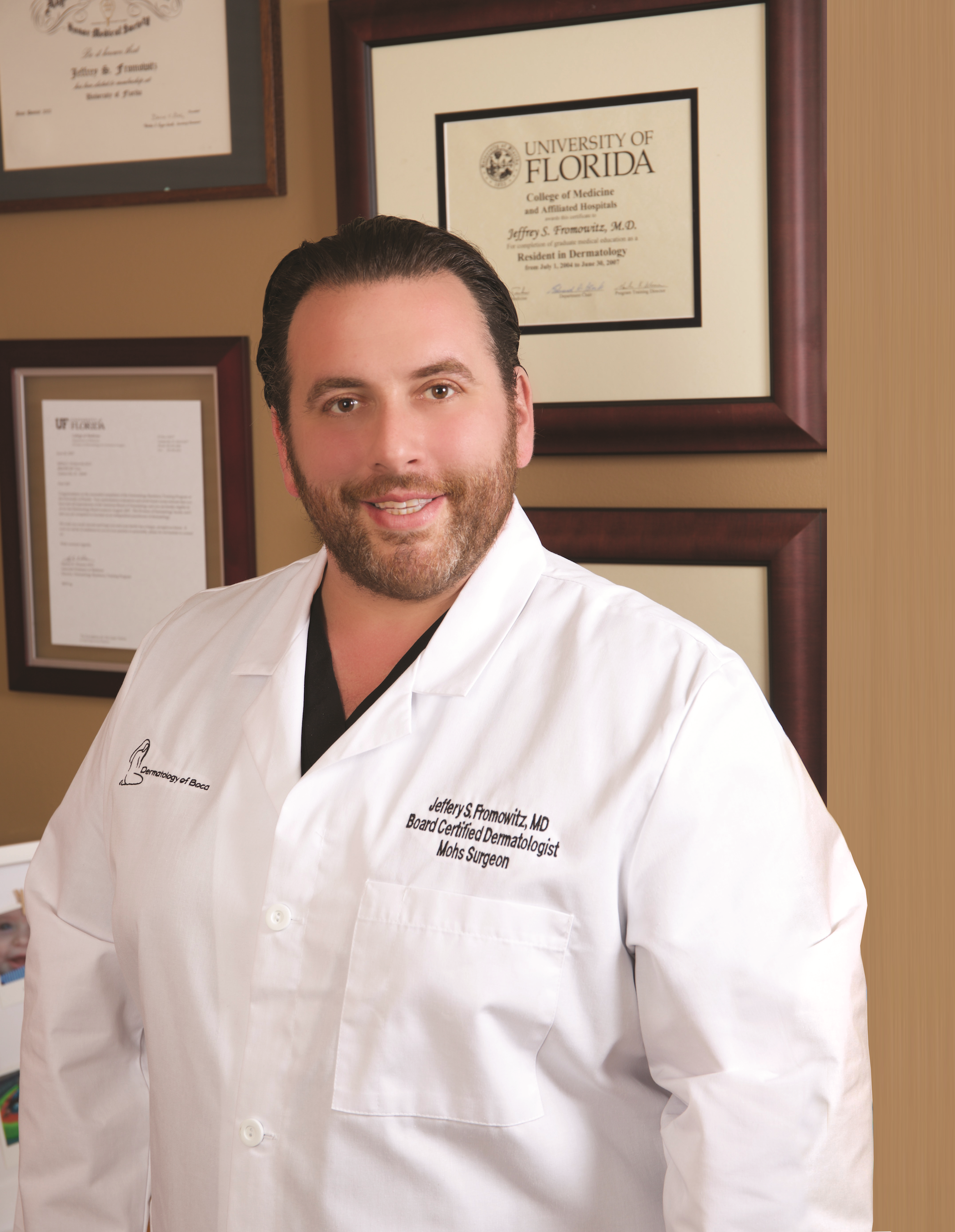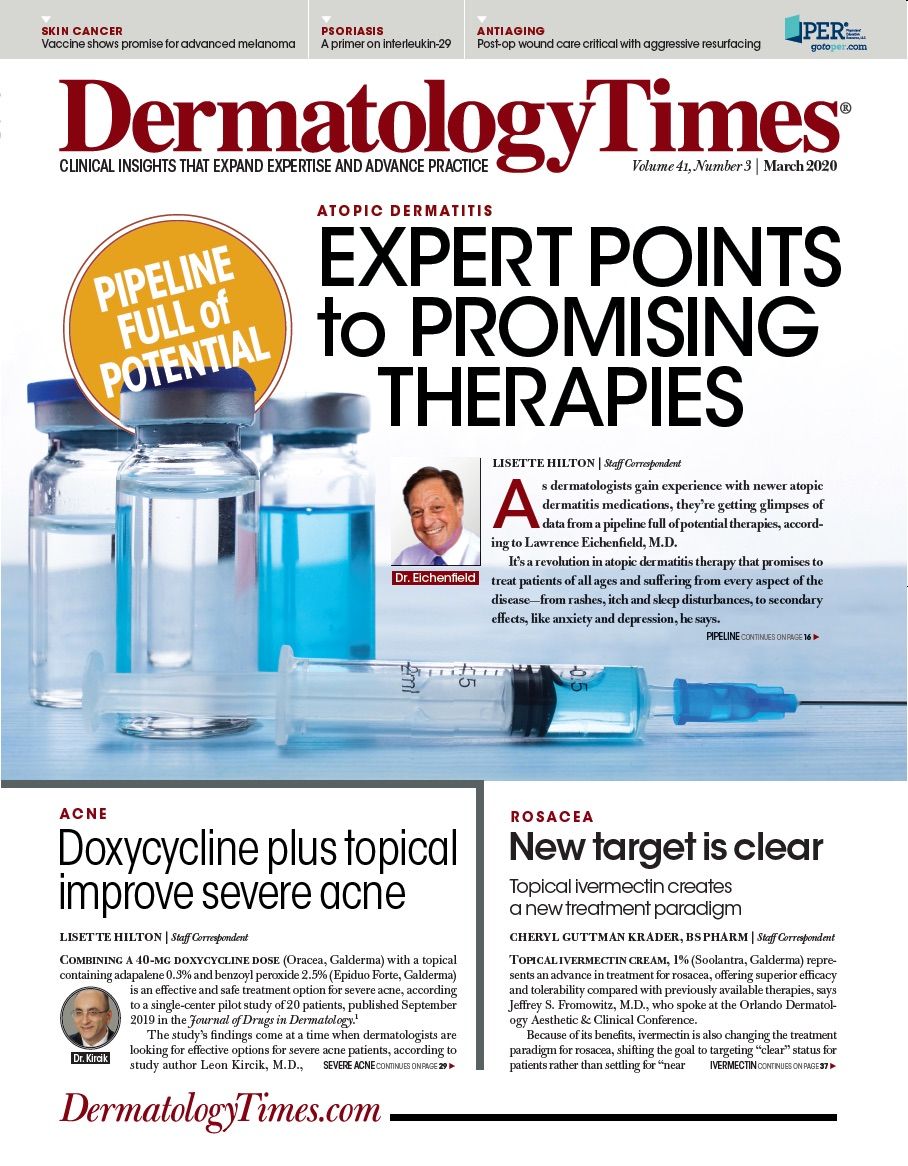- Acne
- Actinic Keratosis
- Aesthetics
- Alopecia
- Atopic Dermatitis
- Buy-and-Bill
- COVID-19
- Case-Based Roundtable
- Chronic Hand Eczema
- Drug Watch
- Eczema
- General Dermatology
- Hidradenitis Suppurativa
- Melasma
- NP and PA
- Pediatric Dermatology
- Pigmentary Disorders
- Practice Management
- Precision Medicine and Biologics
- Prurigo Nodularis
- Psoriasis
- Psoriatic Arthritis
- Rare Disease
- Rosacea
- Skin Cancer
- Vitiligo
- Wound Care
Publication
Article
Dermatology Times
Topical rosacea cream creates new treatment paradigm
Author(s):
Topical ivermectin cream, 1% (Soolantra, Galderma) represents an advance in treatment for rosacea, o ffering superior e fficacy and tolerability compared with previously available therapies, says Je ffrey S. Fromowitz, M.D., who spoke at the Orlando Dermatology Aesthetic & Clinical Conference.

Dr. Fromowitz

Topical ivermectin cream, 1% (Soolantra, Galderma) represents an advance in treatment for rosacea, offering superior efficacy and tolerability compared with previously available therapies, says Jeffrey S. Fromowitz, M.D., who spoke at the Orlando Dermatology Aesthetic & Clinical Conference.
RELATED: This rosacea cream may offer fast relief
Because of its benefits, ivermectin is also changing the treatment paradigm for rosacea, shifting the goal to targeting “clear” status for patients rather than settling for “near clear,” according to Dr. Fromowitz, medical director of Dermatology of Boca, Boca Raton, Fla.
“With ivermectin it is now possible to drive more patients with rosacea towards an outcome of ‘clear’ versus ‘near clear’. That is a clinically relevant distinction considering available data on the psychosocial burdens of rosacea and showing the benefit of achieving disease clearance for a longer treatment-free interval,” he says.
PSYCHOSOCIAL SEQUELAE
As an inflammatory condition involving facial skin, rosacea can have significant quality of life consequences for individuals. Studies of patients with rosacea highlight how the disease affects their self-esteem and creates feelings of helplessness, depression, embarrassment, anger, and it raises social anxiety levels.
In addition, research shows that significant proportions of patients with rosacea rate their disease as having a moderate or greater negative impact on their life and report spending several hours a day dealing with their disease. Considering findings from studies asking for input on the qualities of people with rosacea, the emotional toll of rosacea reported by patients is not unwarranted.
“In a study where participants were shown side by side images of a person with clear skin and someone with rosacea, the person with rosacea was rated as being more insecure, unhealthy, more likely to be single, more likely to be stressed or unhappy, less likely to be an executive manager, and less likely to be reliable,” Dr. Fromowitz says.
“This information underscores the need to recognize the psychological consequences that rosacea has on patients and the potential value of a treatment able to clear the disease.”
IVERMECTIN MOA AND OUTCOMES
Ivermectin represents a unique treatment for reducing inflammatory lesions of rosacea and is thought to exert its benefit via dual mechanisms. First, ivermectin has anti-inflammatory activity, decreasing both the cellular and humoral immunity pathways that are thought to be involved in the development of rosacea. In addition, ivermectin is a vermicidal agent, killing Demodex mites that have been implicated in rosacea pathophysiology and may drive inflammation.
In both pivotal trials that led to the approval of topical ivermectin, the medication demonstrated statistical superiority compared with vehicle control in both co-primary endpoints that looked at the percentage of subjects achieving clear or almost clear in the Investigator Global Assessment at week 12 and the absolute change in in ammatory lesion count from baseline to week 12.
Other studies provide evidence comparing topical ivermectin with other treatments for papulopustular rosacea. A European pharmacoeconomics study comparing ivermectin cream, 1% with metronidazole cream, 0.75% reported statistically significant differences favoring ivermectin for having better efficacy and tolerability. Another study examining the long-term efficacy and safety profiles of ivermectin, metronidazole cream, and azelaic acid gel, 15% showed ivermectin offered both superior efficacy and better tolerability than the other topical agents, reported Dr. Fromowitz.
In the study comparing topical ivermectin and metronidazole cream, the percentage of patients achieving success without relapse requiring retreatment was found to be 33% greater in the ivermectin versus metronidazole group. In addition, the mean time to relapse was 30 days longer in the ivermectin group, or stated another way, patients using ivermectin benefited with an average of 30 more treatment-free days.
RELATED: An expert discusses how to diagnose rosacea in skin of color patients
“The ability to induce remission and eliminate the need for daily use of a medication is an important outcome for patients with any chronic disease,” Dr. Fromowitz says.
A post-hoc analysis of data from the ivermectin pivotal trial demonstrated that achieving a clear outcome versus almost clear translated into a longer treatment-free interval. Median time to relapse was eight months for patients rated as clear by their investigators compared with just three months for those whose outcome was judged as almost clear.
The data were also analyzed to examine the impact of achieving clear status, and the results showed that it matters to patients. Among patients whose rosacea was rated clear by their treating investigator, approximately 77% rated their disease improvement as excellent compared with just 41% of patients who achieved an investigator rating of near clear.
Disclosures:
Dr. Fromowitz has received speaking and consulting fees from Galderma.

Newsletter
Like what you’re reading? Subscribe to Dermatology Times for weekly updates on therapies, innovations, and real-world practice tips.




























